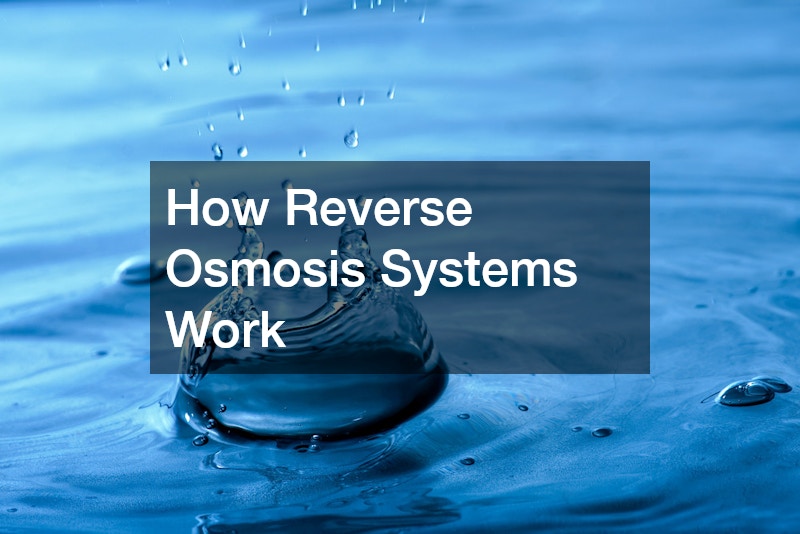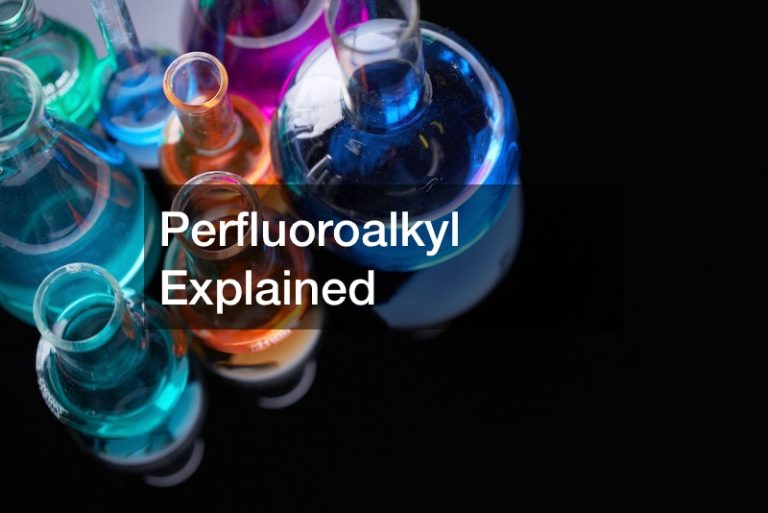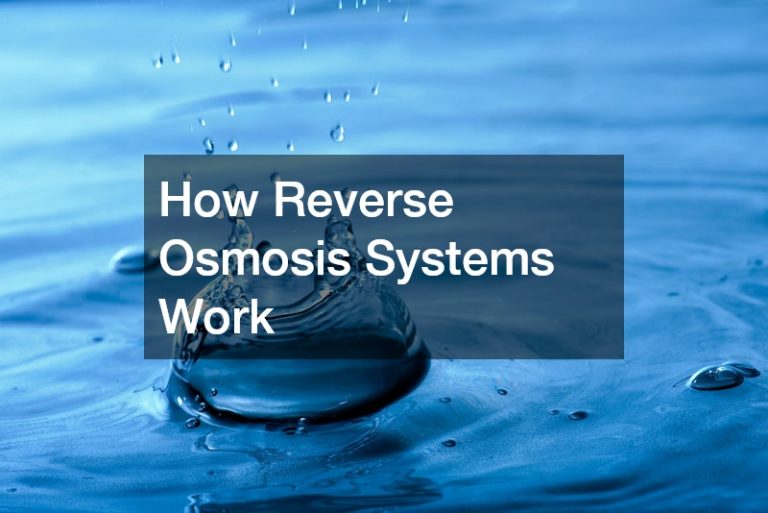

Water is essential for life, and ensuring access to clean, safe drinking water is crucial for health and well-being. One effective method of purifying water is through reverse osmosis systems. These systems have gained popularity for their ability to remove impurities and contaminants from water, making it suitable for consumption.
Understanding how reverse osmosis systems work can help you appreciate their importance and determine if they are the right choice for your home or business.
At its core, a reverse osmosis system uses a semi-permeable membrane to filter out impurities from water. The process begins with water being forced through this membrane under pressure. The semi-permeable membrane allows only certain molecules, primarily water, to pass through while blocking larger particles, such as salts, bacteria, and other contaminants. This filtration process effectively separates clean water from impurities, producing purified water on one side and a concentrated waste solution on the other. This technology is widely used not only in residential settings but also in various industries, including food and beverage production.
The first stage in a reverse osmosis system typically involves pre-filtration. Before the water reaches the membrane, it passes through one or more pre-filters designed to remove larger particles and sediment. This pre-filtration step is essential, as it helps protect the delicate reverse osmosis membrane from damage and fouling caused by larger contaminants. Common pre-filters include activated carbon filters, which effectively remove chlorine, taste, and odor from the water, ensuring that the incoming water is as clean as possible.
Once the pre-filtration process is complete, the water enters the reverse osmosis membrane chamber. Here, the system applies pressure to the water, forcing it through the semi-permeable membrane. This pressure is critical, as it determines the efficiency of the filtration process. The higher the pressure applied, the more water can be purified. Most household reverse osmosis systems operate at pressures between 40 to 100 psi (pounds per square inch), depending on the water source and system design. This ability to adapt to different pressure levels is one of the reasons these systems are so effective.
As the water passes through the reverse osmosis membrane, the impurities are left behind and flushed away as wastewater. This wastewater is typically discharged through a drain or separate line. The purified water, now free from most contaminants, is collected in a storage tank. This tank allows for a ready supply of clean drinking water whenever you need it. Many systems also include a post-filter stage to further improve the taste and quality of the purified water before it reaches your tap, enhancing the overall user experience.
One of the significant advantages of reverse osmosis systems is their ability to remove a wide range of contaminants. These systems can effectively reduce levels of dissolved solids, heavy metals, chemicals, and microorganisms, making the water safer to drink. Common contaminants removed include lead, arsenic, fluoride, chlorine, and nitrates. For households with specific water quality concerns, reverse osmosis systems can be customized with additional filters or stages to target particular impurities, ensuring the highest possible water quality for your family.
While reverse osmosis systems offer many benefits, they also have some considerations to keep in mind. One potential drawback is the production of wastewater during the purification process. For every gallon of purified water, a reverse osmosis system may produce between 2 to 4 gallons of wastewater, depending on its efficiency. However, many modern systems are designed to minimize waste and improve recovery rates, making them more efficient and environmentally friendly. These advancements help balance the need for clean water with sustainability.
Maintenance is another important aspect of reverse osmosis systems. Regularly changing the pre-filters, membrane, and post-filters is essential for maintaining optimal performance and ensuring the quality of the purified water. Most systems come with a recommended maintenance schedule, and it’s crucial to follow it to avoid potential issues. With proper care, a reverse osmosis system can provide years of reliable service and access to clean drinking water, making it a valuable investment for any household.
In conclusion, reverse osmosis systems are an effective solution for producing high-quality drinking water by removing a wide range of impurities and contaminants. Understanding how these systems work—from the pre-filtration stage to the purification process and storage—can help you make informed decisions about your water treatment options. While they may produce some wastewater and require maintenance, the benefits of having safe and clean drinking water often outweigh these concerns. Whether for your home or business, investing in a reverse osmosis system can ensure that you and your loved ones enjoy fresh, pure water for years to come.
.




